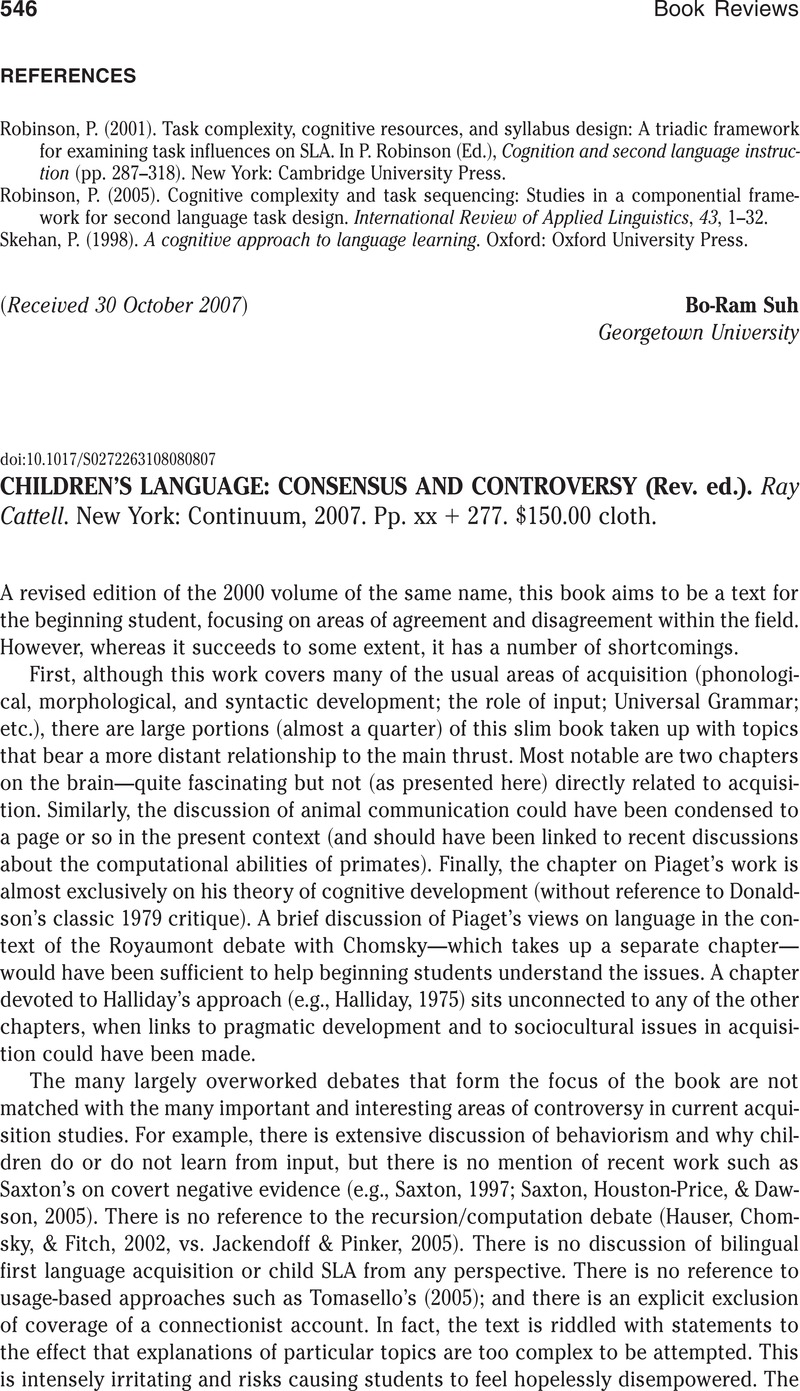No CrossRef data available.
Article contents
CHILDREN'S LANGUAGE: CONSENSUS AND CONTROVERSY (Rev. ed.). Ray Cattell. New York: Continuum, 2007. Pp. xx + 277. $150.00 cloth.
Published online by Cambridge University Press: 29 October 2008
Abstract
An abstract is not available for this content so a preview has been provided. Please use the Get access link above for information on how to access this content.

- Type
- BOOK REVIEWS
- Information
- Copyright
- Copyright © Cambridge University Press 2008
References
REFERENCES
Halliday, M.A.K. (1975). Learning how to mean: Explorations in the development of language. London: Arnold.Google Scholar
Hauser, M.D., Chomsky, N., & Fitch, W.T. (2002). The language faculty: What is it, who has it, and how does it evolve? Science, 298, 1569–1679.Google Scholar
Jackendoff, R. & Pinker, S. (2005). The nature of the language faculty and its implications for the evolution of language (Reply to Fitch, Hauser, and Chomsky). Cognition, 96, 211–225.Google Scholar
Saxton, M. (1997). The contrast theory of negative input. Journal of Child Language, 24, 139–161.Google Scholar
Saxton, M., Houston-Price, C., & Dawson, N. (2005). The prompt hypothesis: Clarification requests as corrective input for grammatical errors. Applied Psycholinguistics, 26, 393–414.Google Scholar
Tomasello, M. (2005). Constructing a language: A usage-based theory of language acquisition. Cambridge, MA: Harvard University Press.Google Scholar




